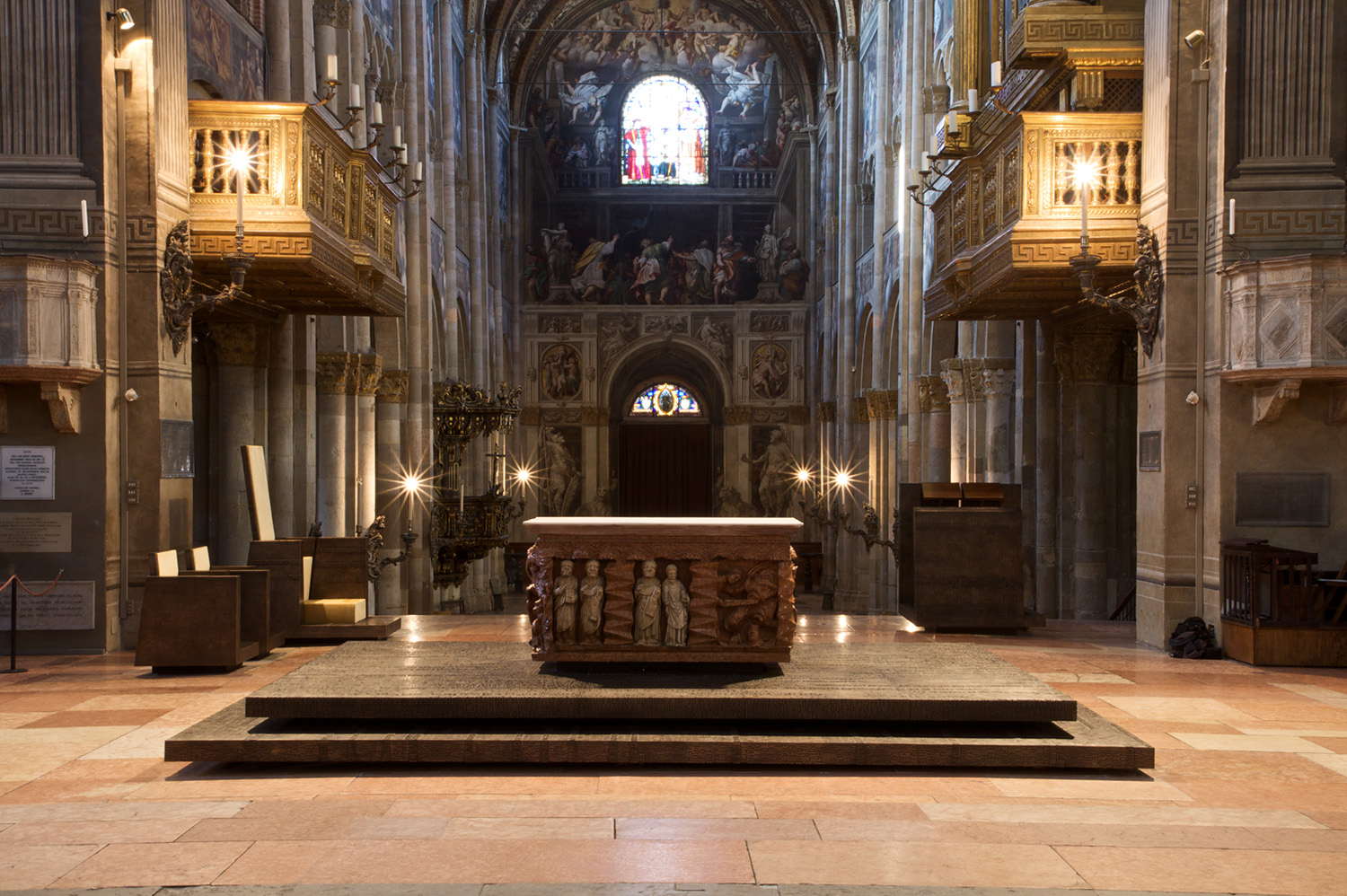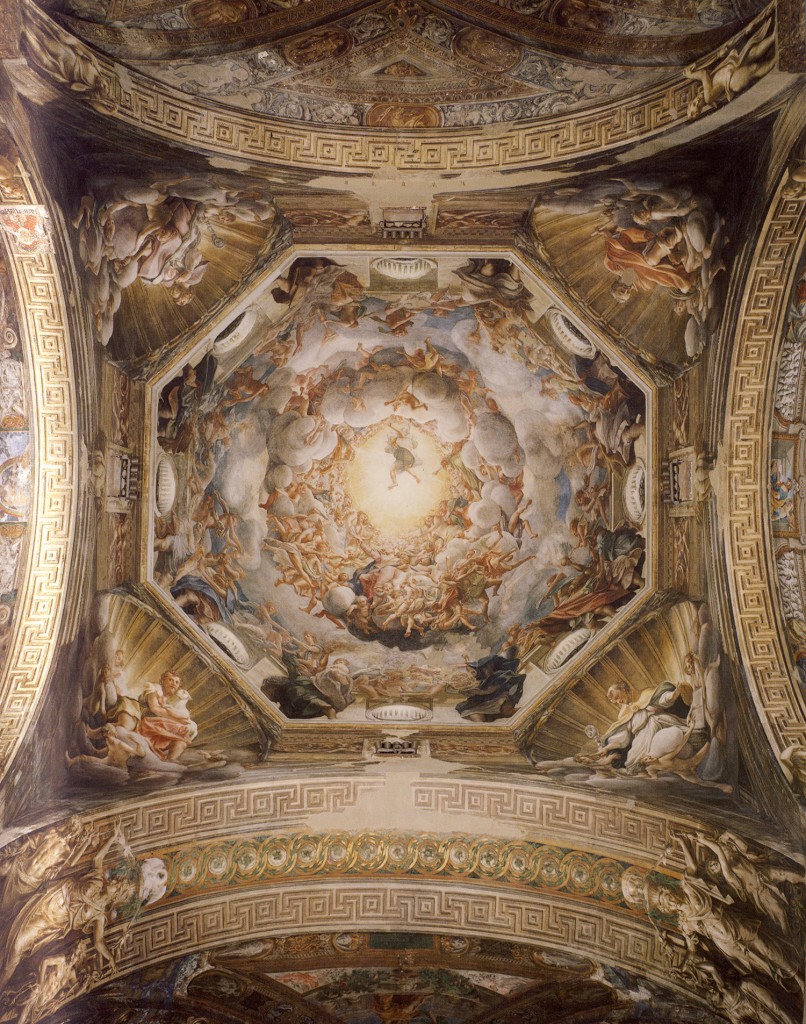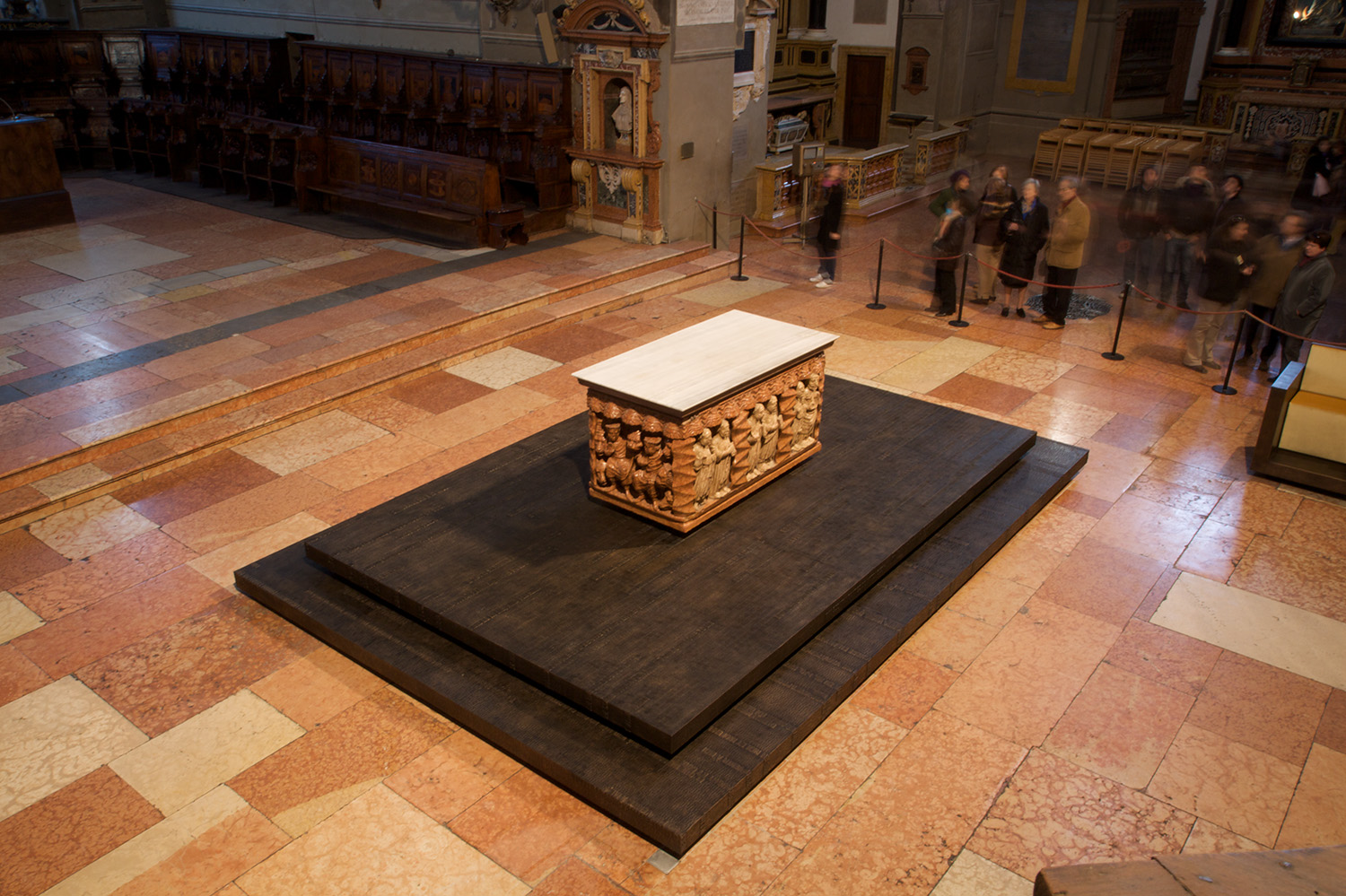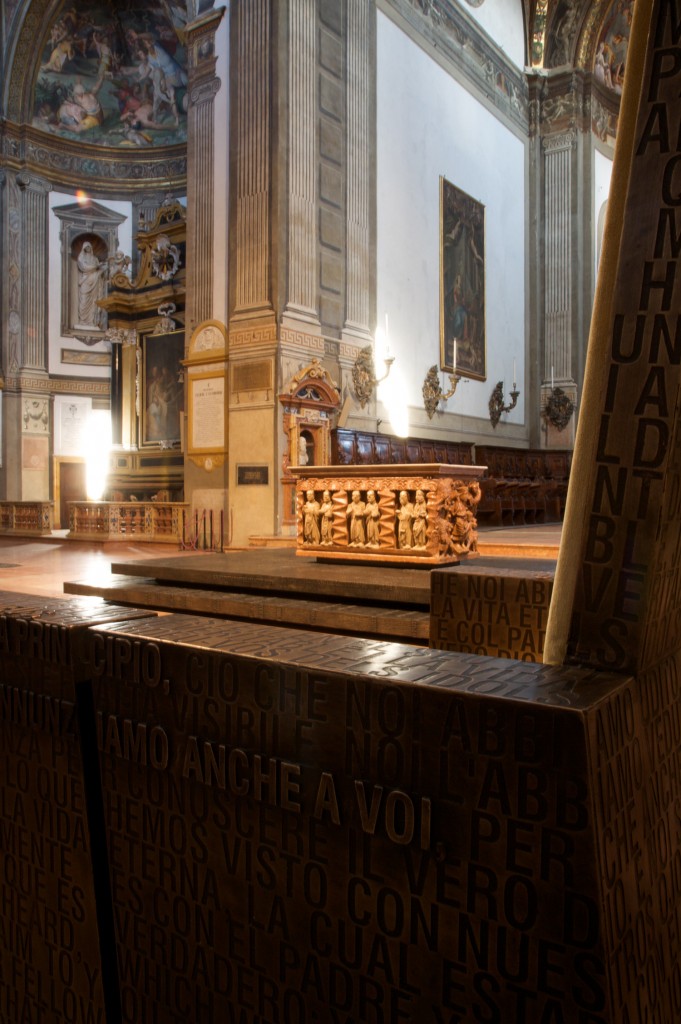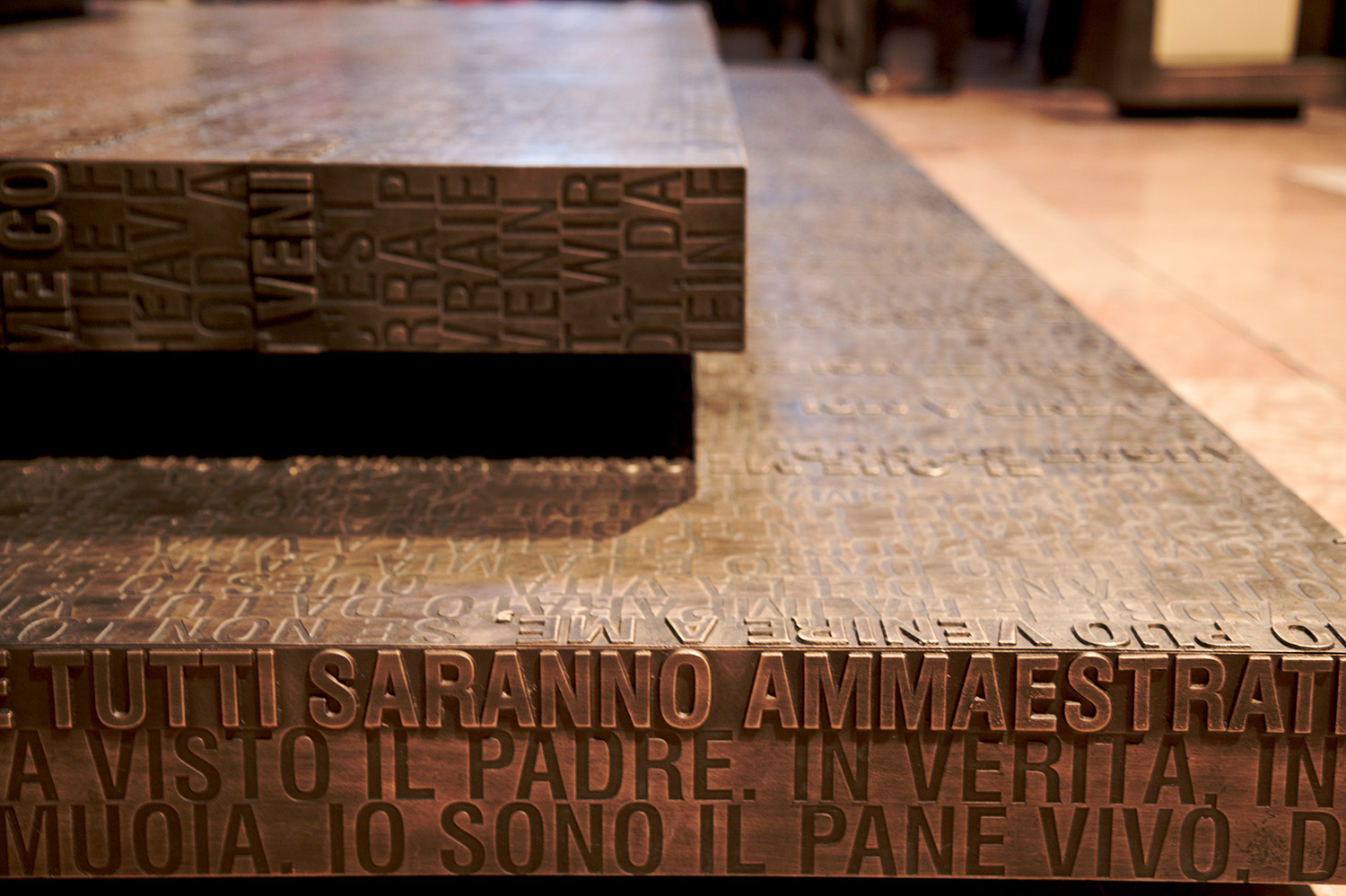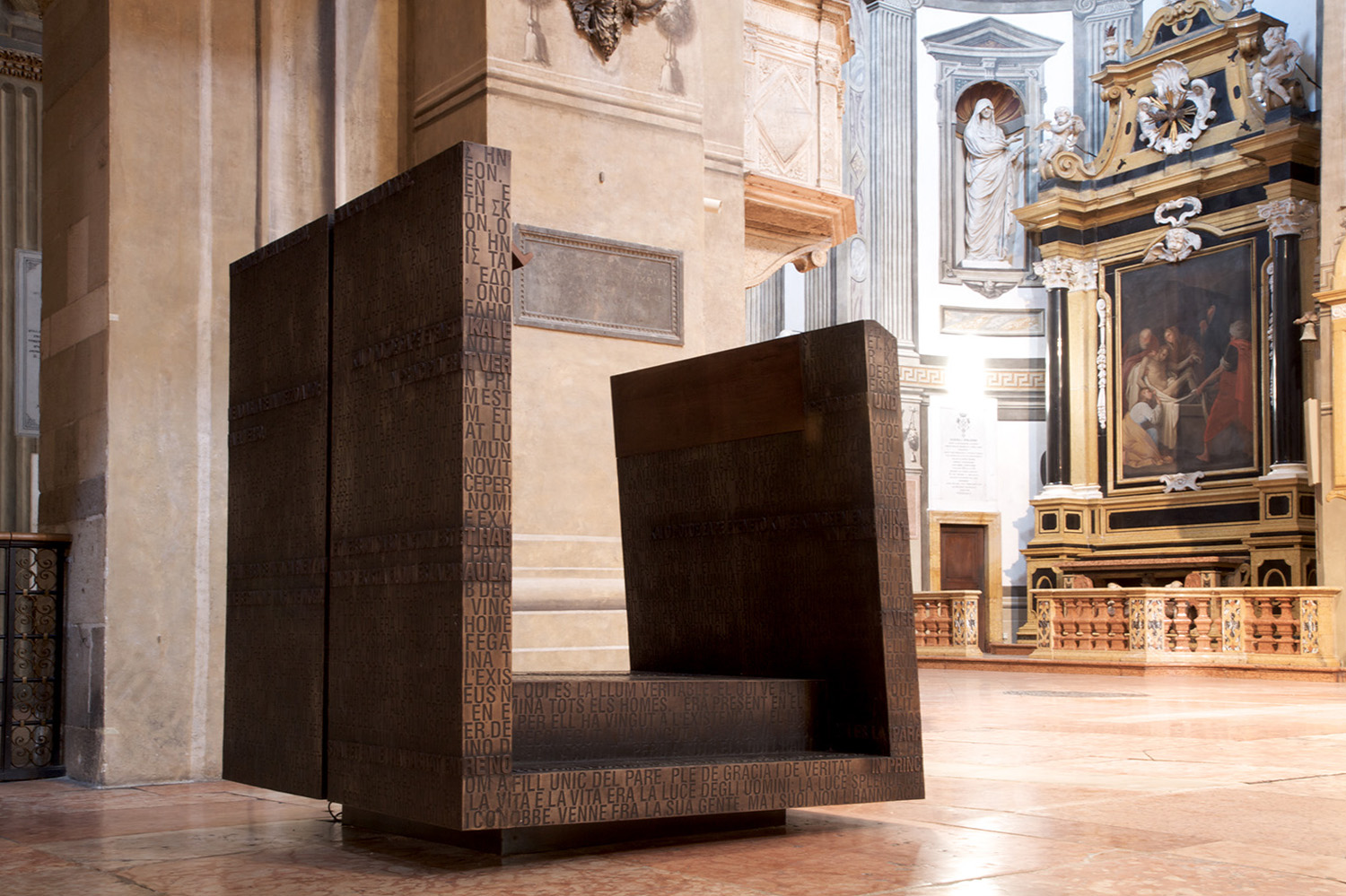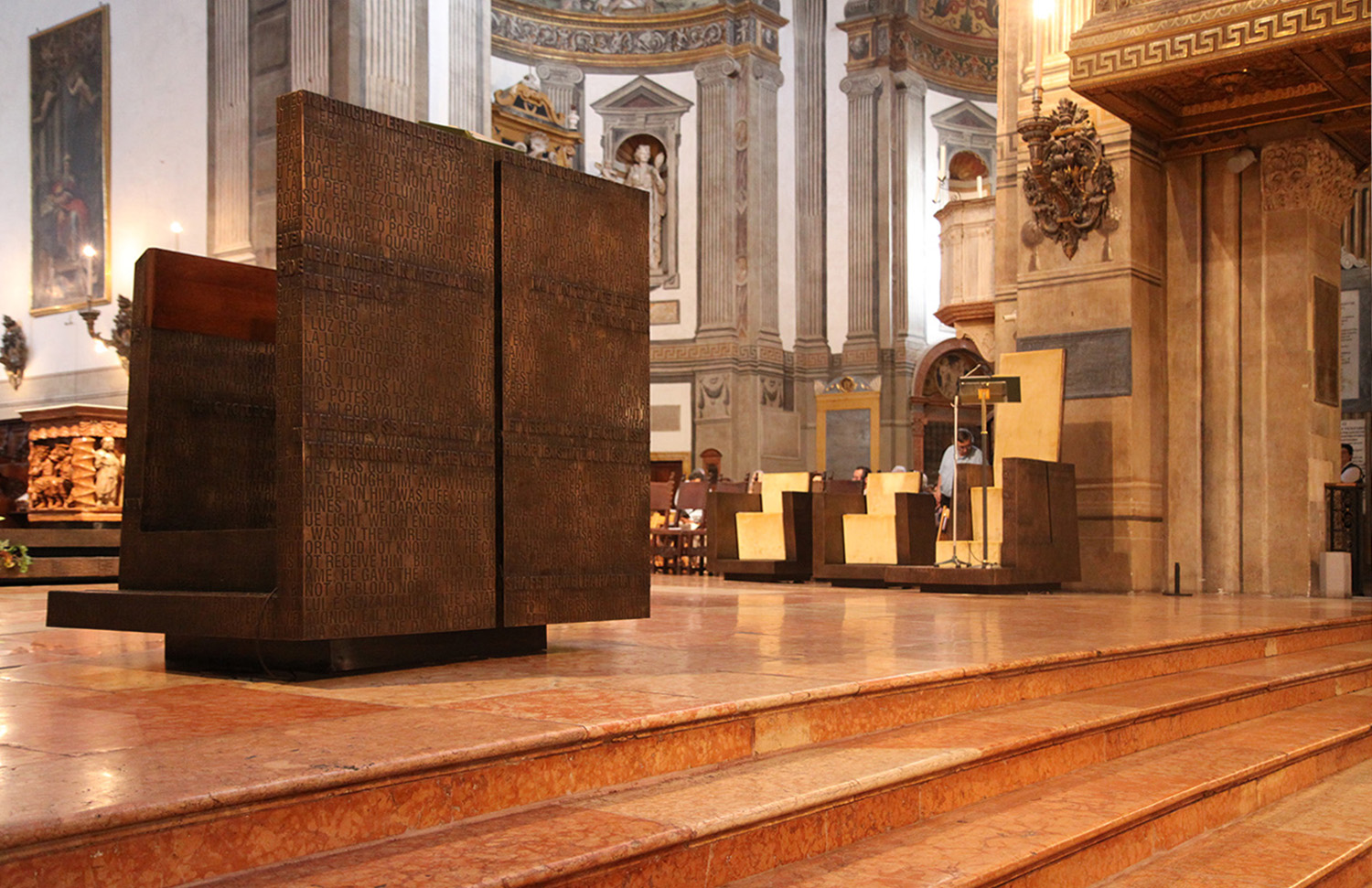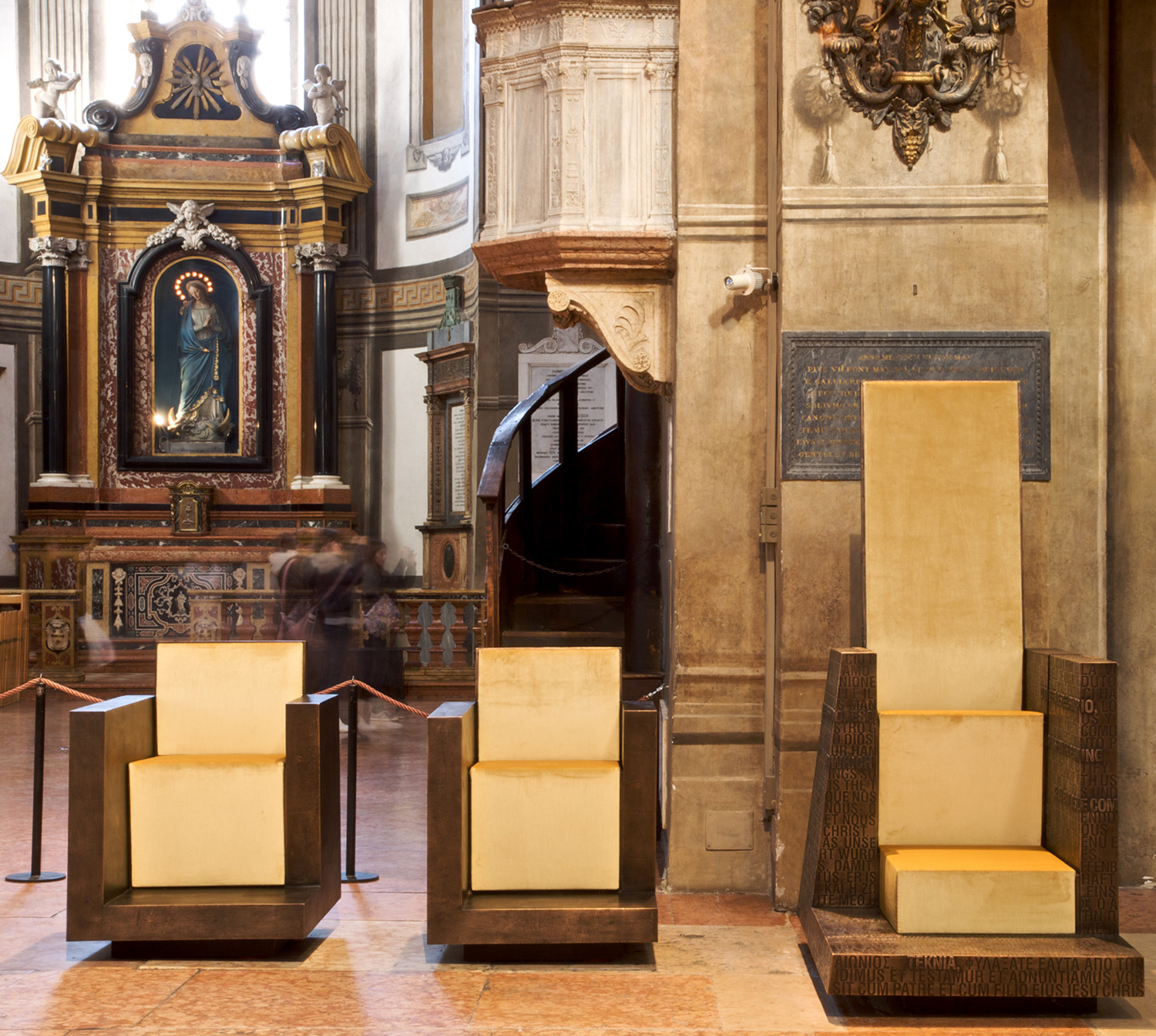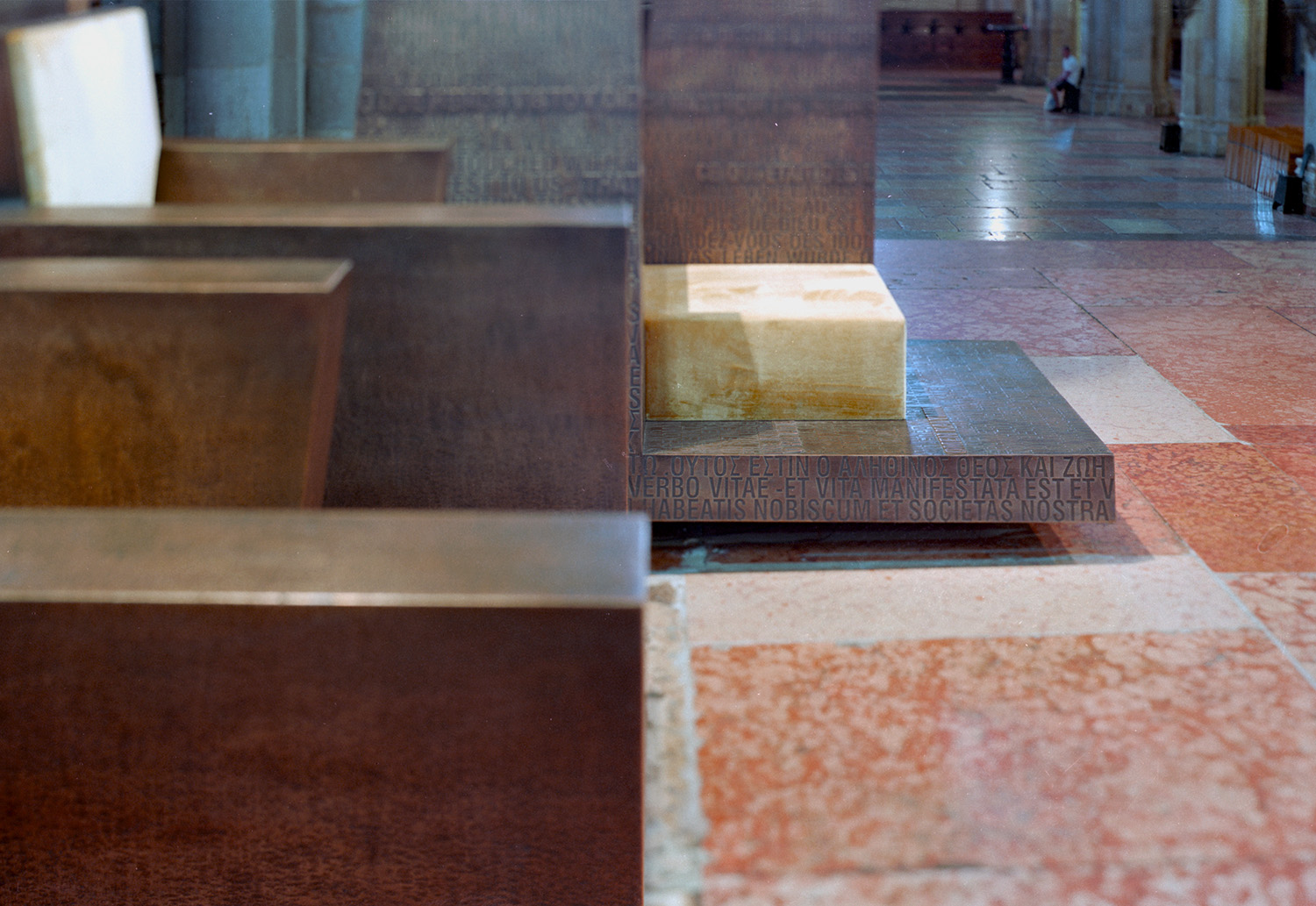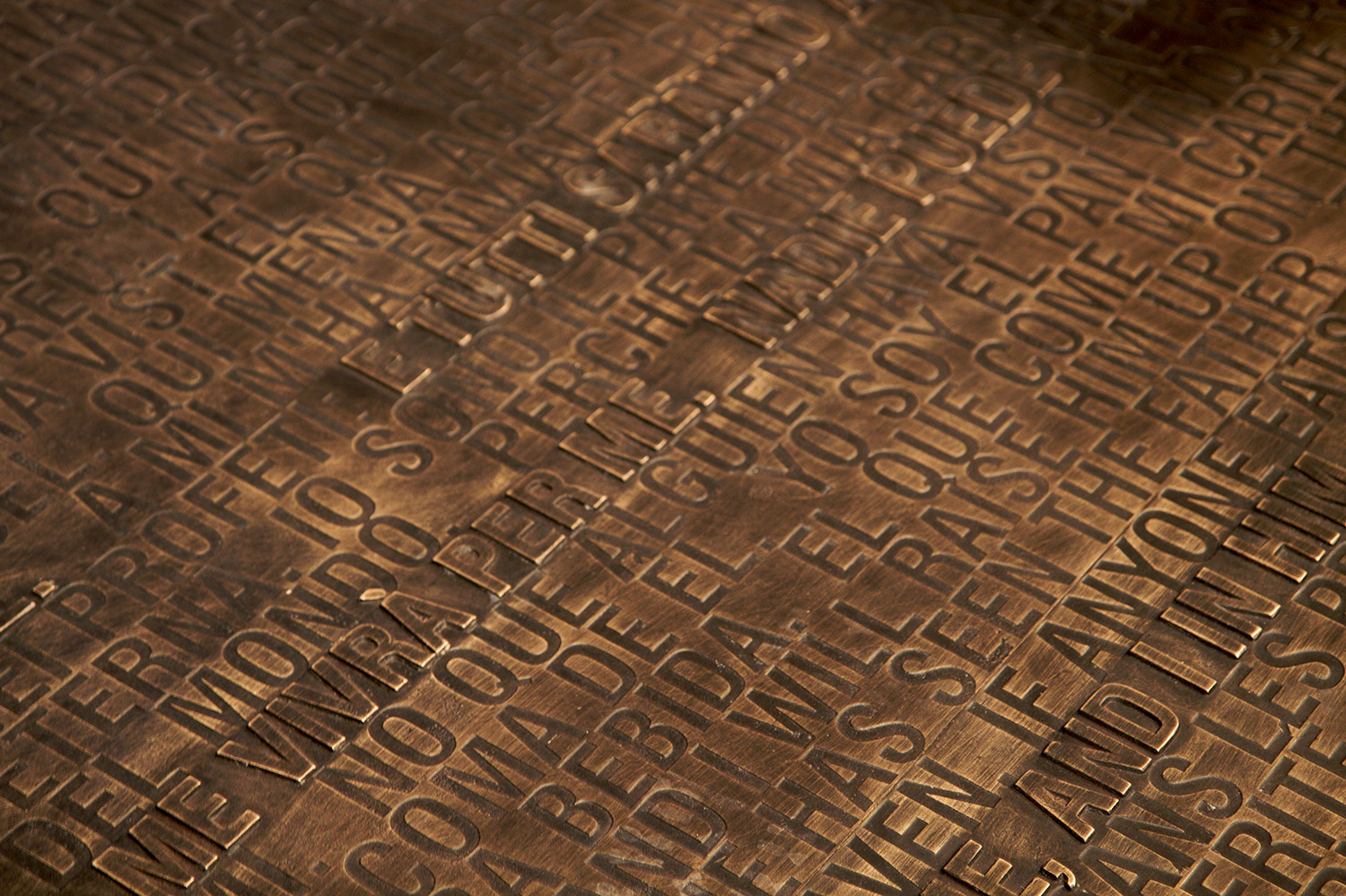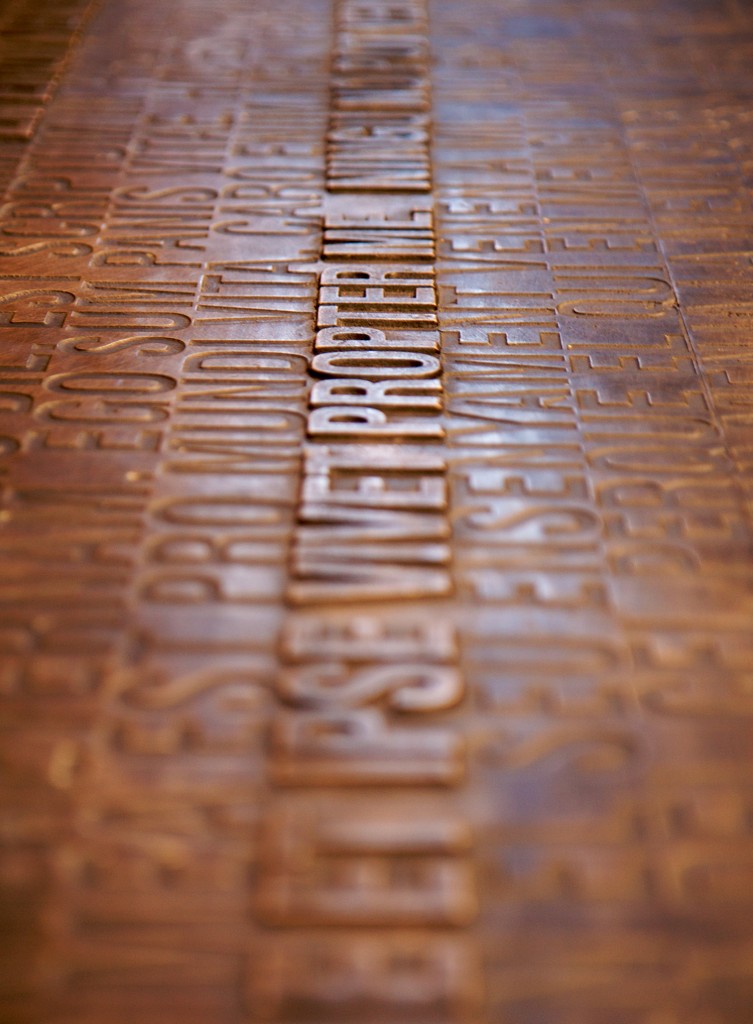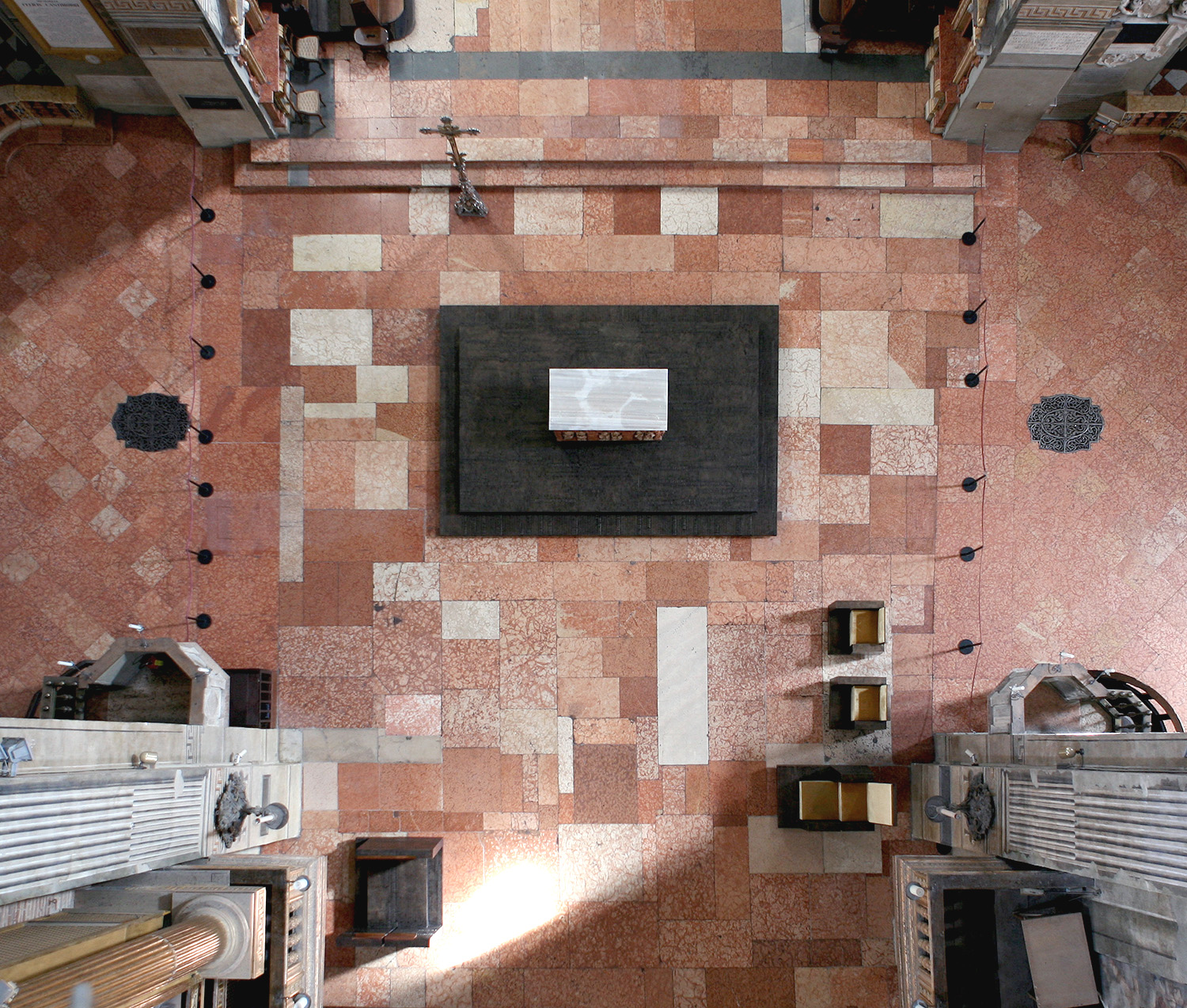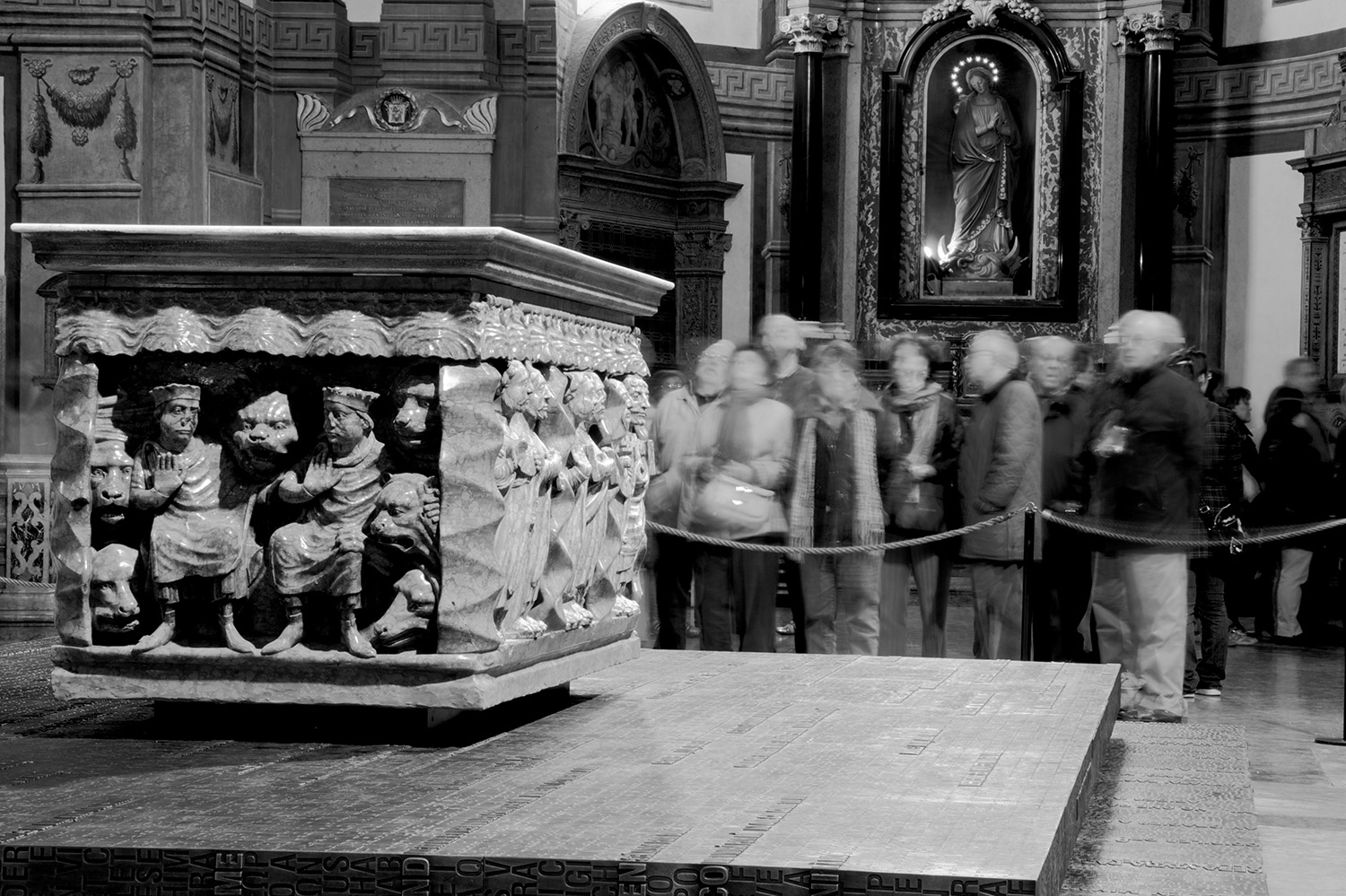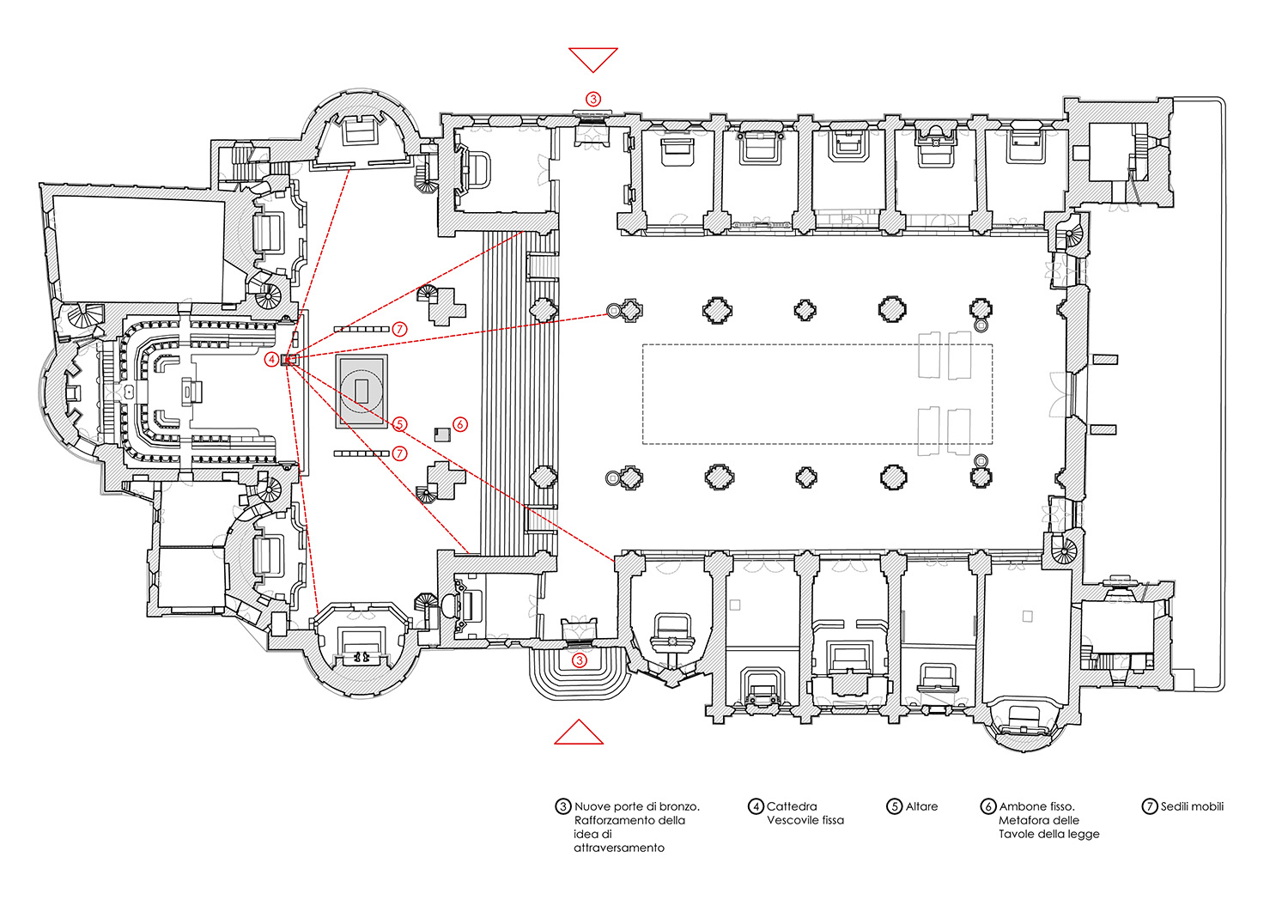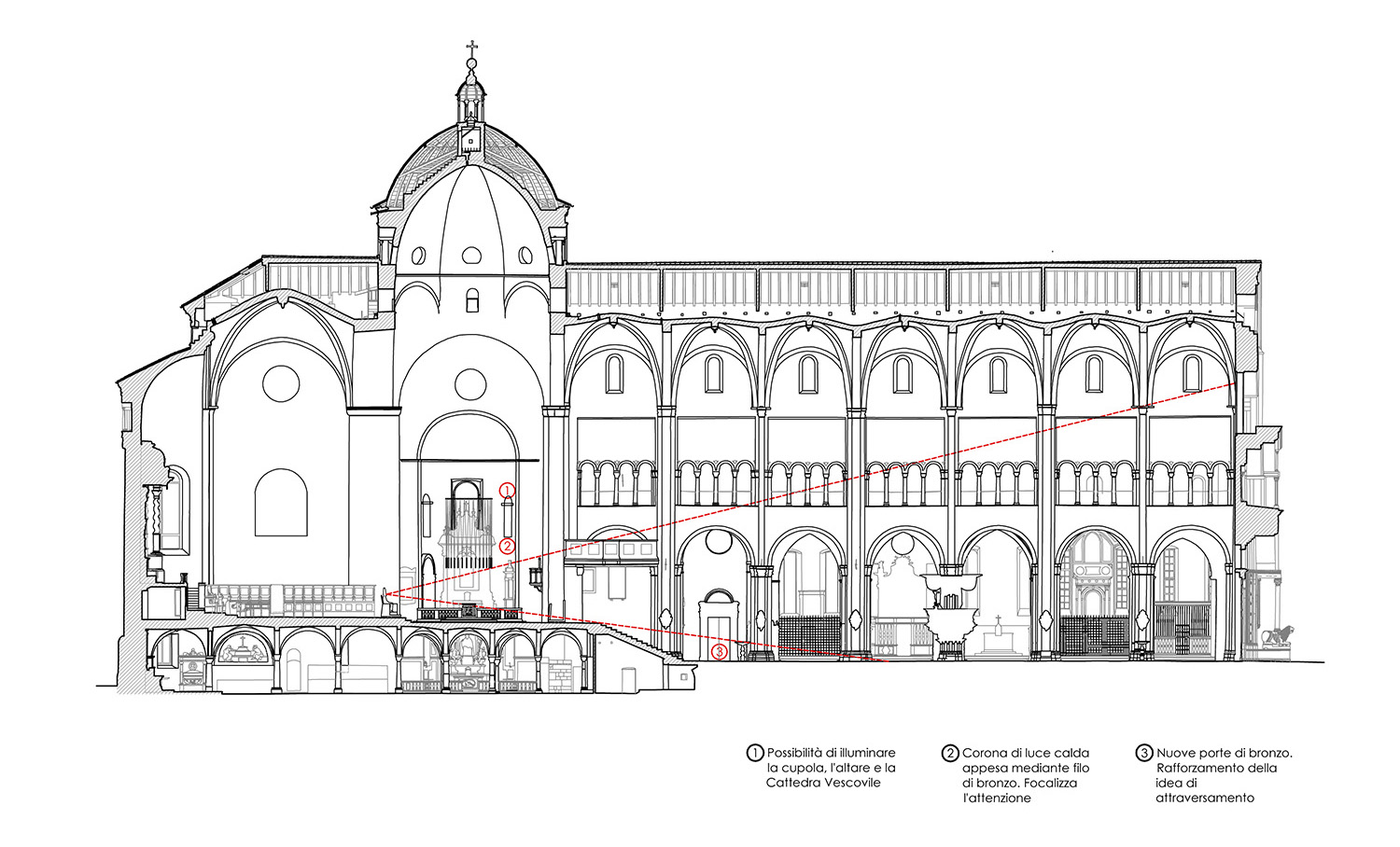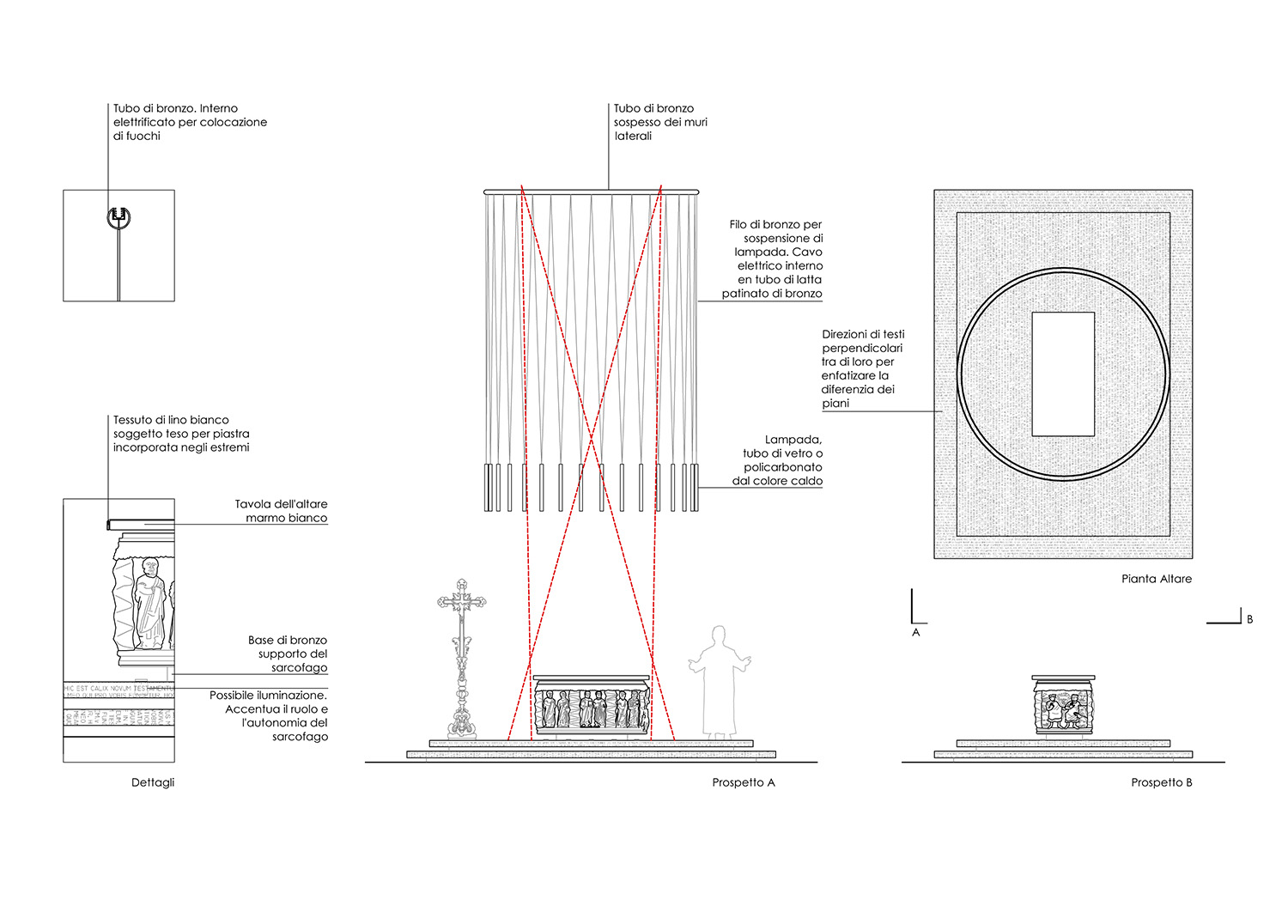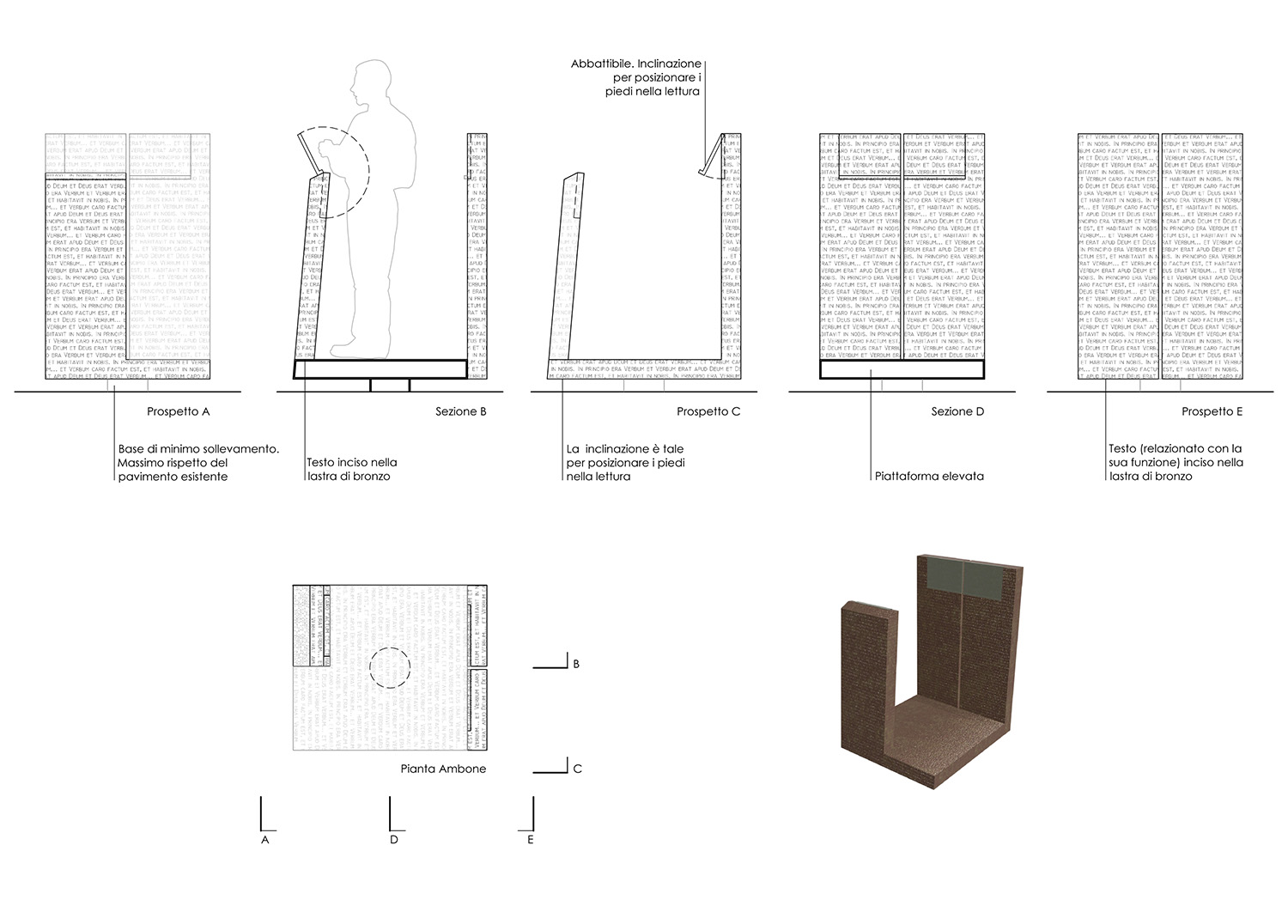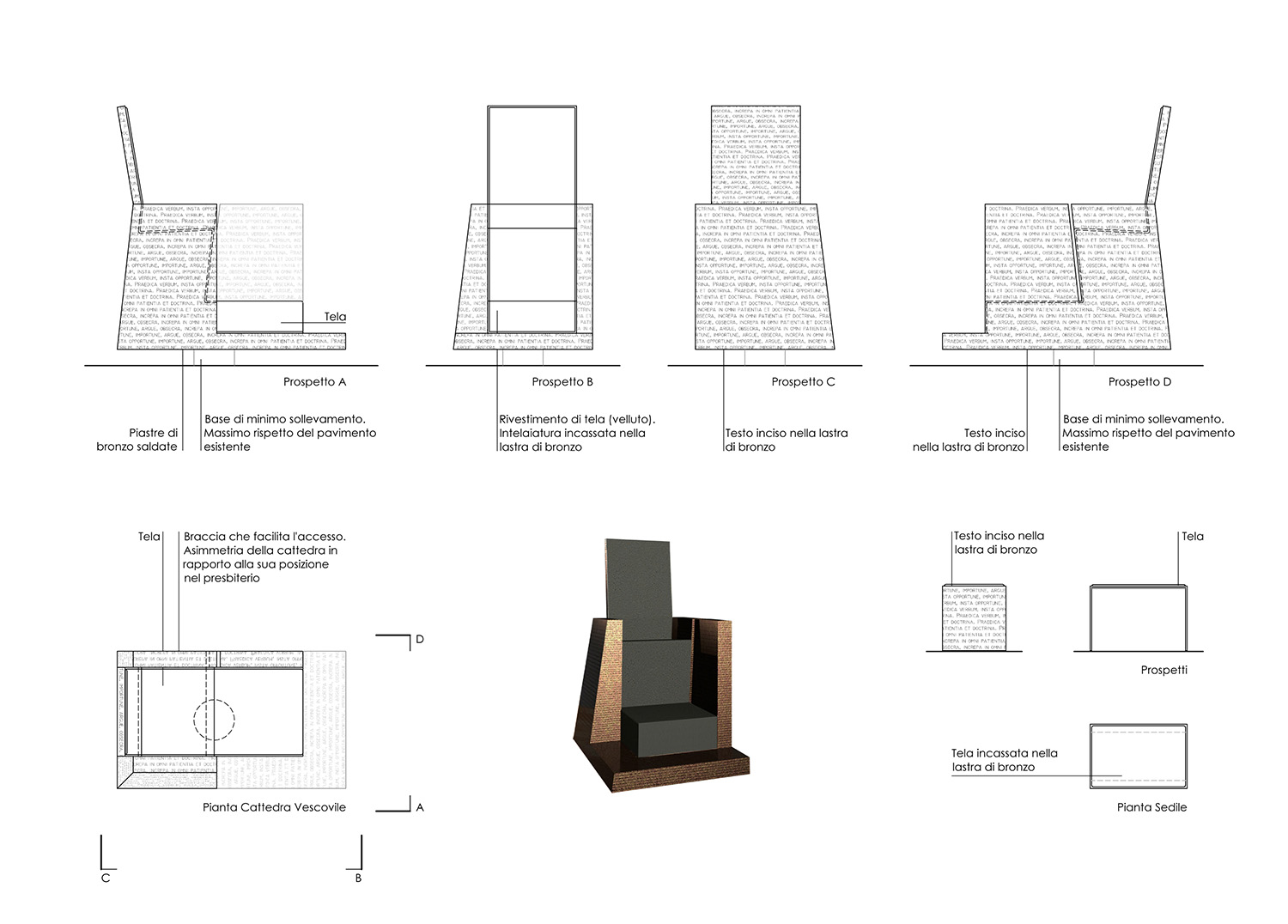The reform of Parma Cathedral is the result of an invitation-only international competition undertaken in the year 2004 that brought together several international architects. The project consists of creating four elements (the altar, the pulpit, the bishop´s see and the auxiliary chairs) for the chancel of Parma Cathedral in order to adapt this space to the liturgy.
The design of these elements is based on the unity of materials and the diagonal layout that allows for both a spatial relationship among them and with the space of the chancel and nave. The final position of the elements provides visuals that were difficult to achieve beforehand owing to the seciton of the nave.
The pieces have all been made from the same material, cast bronze panels given a manual patina with wax after previously polishing it with graphite-based liquid. They are ten millimetres thick and engraved in bas-relief like delicate pieces of silverwork, with biblical texts referring to the function of each object in Latin, Grekk and the principal modern languages.
The biblicat texts used make reference to the function of each object; thus, the text on the pulpit is composed of verses 1 to 5 and 9 to 14 of chapter 1 of the Gospel according to St John; the bishops´s see of verses 1 to 3 and 20 to 21 of chapter 1; and the altar of verses 44 to 48, 50 to 51 and 55 to 57 of chapter 6.
The heavy material of all the pieces allows them to be interpreted in two ways. One is as an extremely light design thanks to their elevated position off the floor and the way they conceal their support points. The other is their extreme heaviness owing to the material and massive size.
It must be taken into account that the bishop´s see weighs 820 kg, the auxiliary chairs 440 kg each, the pulpit 1180 kg and the altar base 4700 kg, a total of over seven and a half tons, yet with a sensation of extreme lightness.
The altar has kept the twelfth-century sarcophagus that stands on two bronze platforms. Above the sarcophagus is a piece in white marble that crowns the whole.
The pulpit has been rethought with regard to its fixed position and its double function of facing the nave and the choir of the cathedral. It therefore offers two operationg possibilites, with two different images: towards the nave, as a reference to the tables of the law, and towards the more open choir, with a single vertical piece.
The bishop´s see, situated opposite the pulpit in a diagonal line that passes through the altar, had to be elevated so that it could be seen (and itself have a view) from the nave, situated at a lower level owing to the section of the cathedral.
The see therefore has two steps incorporated into its design that follow on the two steps that raise the choir above the transpet. This element is also made entirely in bronze, except for the parts nearest the body, which are covered in silk velvet in a yellow “giallo Parma”.
Next to the bishop´s see are two additional chairs in the same formal and material unity to accompany the bishop.
Given the scale of the cathedral and the reduced dimensions of the elements, and in order to refer them to the exceptional sixteenth-century Corregio dome immediately above, there is a great lamp formed by a ring from which hang bronze threads that hold up tubes of light that envelop the altar. This structure of light allows spotlights to be fitted in the top part that illuminate both the new elements downwards and the magnificent cupola upwards, shile allowing for views through it and avoiding any interference with the view of the cupola.
CATEDRAL DE PARMA
Nuevo diseño del altar y el transepto
El proyecto, fruto de un concurso internacional por invitación, consiste en el diseño de cuatro elementos (el altar, el ambón, la sede del obispo y las sillas auxiliares) para el presbiterio de la catedral de Parma, para adecuar este espacio a la litúrgia después de una última renovación en 1983 que aún y resolver muchos problemas, no acabava de ser del todo satisfactoria.
El diseño de estos elementos se hace desde la base de una unidad de materiales, y una disposición en diagonal que permite tanto la relación espacial entre ellos, como con el espacio del presbiterio y la nave. La posición final de los elementos permite unas visuales que, a priori, y debido a la sección de la nave, eran difíciles de conseguir.
Estas distintas piezas se tratan todas con el mismo material; placas de fundición de bronce patinado manual con cera, previa bruñidura con líquido a base de grafito, de 10 mm de grosor grabado en relieve, como delicadas piezas de orfebrería, con textos bíblicos referentes a la función de cada objeto en latín, griego y las principales lenguas modernas.
Los textos bíblicos utilizados hacen referencia a la función de cada objeto; así pues, el texto del ambón son los versos 1 a 5 y 9 a 14 del capítulo 1 del Evangelio de San Juan, la sede episcopal, los versos 1 a 3 y 20 a 21 del capítulo 1, y el altar, versos 44 a 48, 50 a 51 y 55 a 57 del capítulo 6.
El pesado material de todas las piezas hace que éstas tengan una doble lectura, por un lado, y debido a su diseño, de extrema ligereza, por su posición elevada respecto al suelo y la ocultación de sus puntos de apoyo, y por otra, de extrema pesadez, debido a su material y su gran masividad.
Hay que tener en cuenta que la sede del obispo pesa 820 kg, las sillas auxiliares 440 kg cada una, el ambón 1180 kg y la base del altar 4700 kg, con lo cual, un total de más de siete toneladas y media con una sensación de extrema ligereza.
El altar mantiene el sarcófago del S. XII, que se levanta sobre dos plataformas de bronce. Sobre el sarcófago, una pieza de mármol blanco remata toda la pieza.
El ambón se repiensa desde su posición fija y su doble función hacia la nave y hacia el coro de la catedral. Así pues, ofrece dos posibilidades de funcionamiento, con dos imágnes distintas; hacia la nave, como una referencia de las tablas de la ley, y hacia el coro, más abierto, con una sola pieza vertical.
La sede episcopal, ubicada en contraposición al ambón siguiendo una diagonal que pasa por el altar, debía disponerse elevada para que pudiera ser vista (y pudiera ver) desde la nave, situada en una cota más baja debido a la sección de la catedral. Por lo tanto, la sede recoge dos escalones dentro de su propio diseño, que están a continucación de los dos escalones que levantan el coro respecto al transepto. Este elemento también se trata todo de bronce, excepto las partes más cercanas al cuerpo, que se revisten con una tela de terciopelo de seda de color “giallo Parma”. Junto a la sede episcopal, dos sillas más, bajo la misma unidad formal y material acompañan al obispo.
Dada la escala de la catedral, y la pequeña escala de los elementos, y para referirlos a la escepcional cúpula de Correggio del S. XVI inmediatamente superior, disponemos una gran lámpara formada per un anillo del que cuelgan unos hilos de bronce que soportan unos tubos lumínicos que envuelven el altar. Esta estructura de luz permite la colocación de focos en su parte superior para iluminar tanto los nuevos elementos hacia abajo, como la magnífica cúpula superior, al tiempo que permite las visuales a través y la no interferencia con las vistas de la cúpula.
Autor / Architects: Jaume Bach, Eugeni Bach – Bach Arquitectes
Colaboradores / Collaborators: Pere Casanoves (Consultor: fase de concurso/ Consultant: competition phase), Joan Bada (liturgista/ liturgist), Vittorio Savi (Consultor: fase de obra/ Consultant: construction phase)
Fecha de finalización de la obra / Completion date: 2009
Cliente / Client: Fabbriceria della Basilica Cattedrale
Ubicación / Adress: Catedral de Parma, Italia
Fotografías / Photographs: Vittorio Savi, Paolo Barbaro

